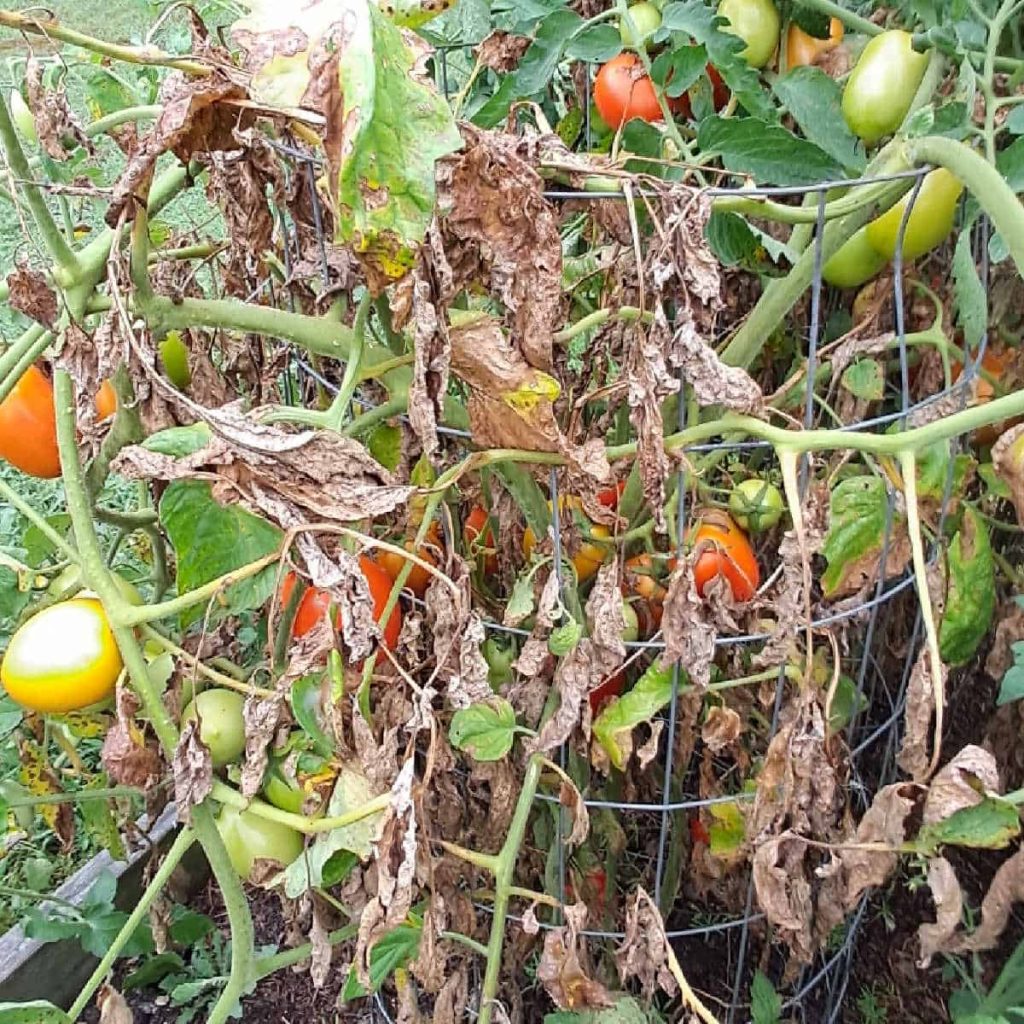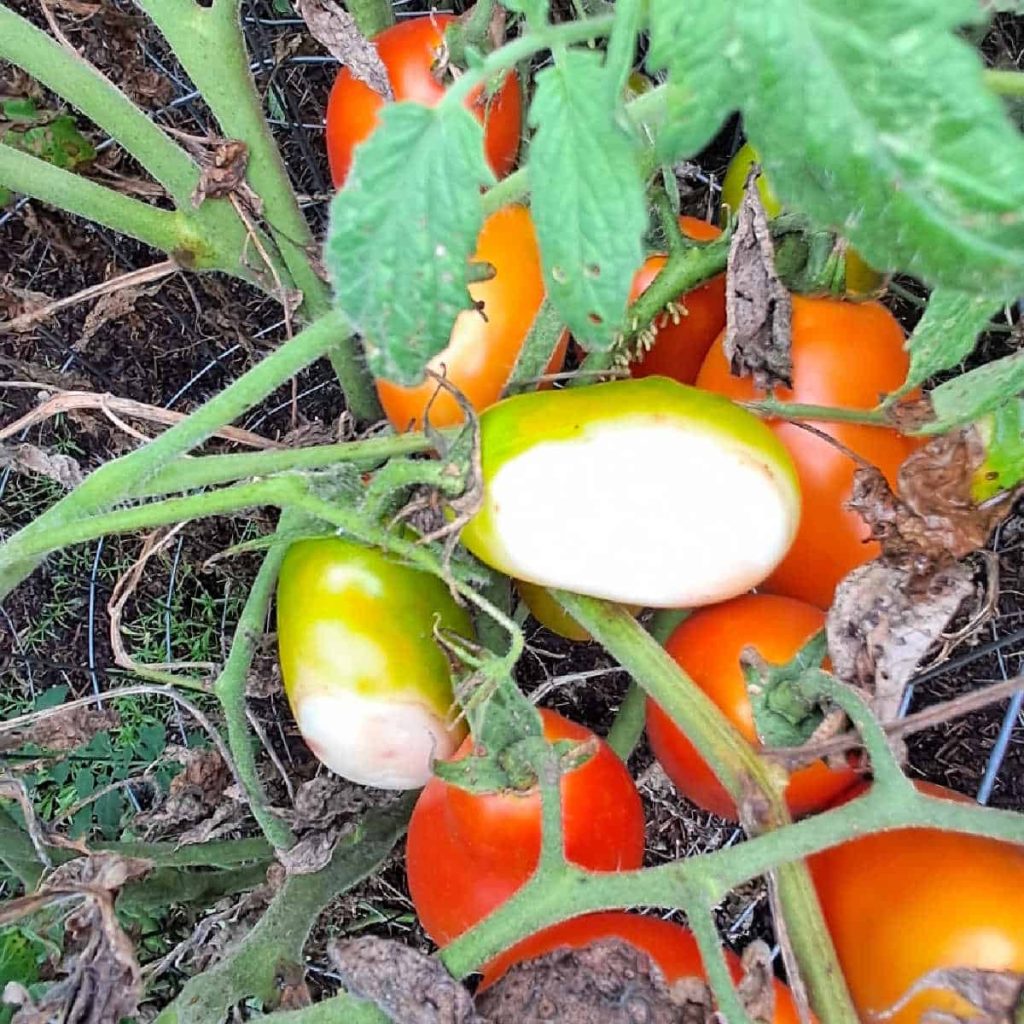If you’ve ever walked out to your garden and spotted tomatoes with pale, blistered patches, you might be dealing with a common but frustrating issue: sunscald. It’s not a disease, and it’s not caused by pests. It’s a physiological disorder that stems from too much sun and heat, especially when fruits are suddenly exposed.
What It Looks Like
Here are pictures from my garden to show you what sunscald looks like. These are Roma, or sauce/paste, tomatoes. Note that they are growing at the top of the plant. The tomatoes near the bottom of the plant, or shaded by leaf cover, are fine. Note also that some of the leaves are dead. We had problems with fungal diseases this summer on the tomatoes.


Sunscald typically shows up as light-colored spots on the side of the tomato that faces the sun. These patches can start off looking slightly water-soaked or blistered, then turn thin, papery, and wrinkled. Unfortunately, once this damage sets in, the fruit becomes vulnerable to fungal infections like Alternaria, which can quickly take over and ruin your harvest.
Causes of Sunscald
So what causes this sudden exposure? Often, it’s the result of losing leaf cover. That can happen if you’ve pruned too aggressively, if pests have chewed through the foliage, or if disease has thinned out the canopy. Without those protective leaves, your tomatoes are left to bake in the sun. Other contributing factors include poor spacing between plants, which limits shade, and low nitrogen levels after fruit set, which can weaken the plant’s ability to maintain healthy foliage.
How Do You Prevent Sunscald on Tomatoes?
The good news is that sunscald is preventable. Start by choosing tomato varieties that naturally grow with dense foliage. The foliage acts like a sunshade over the tomatoes.
Be cautious with pruning, especially during hot spells, and use cages or stakes that support the plant without stripping away its leafy protection. Foliage affected by fungal diseases often dies, leaving the tomatoes exposed. Select disease-resistant varieties to minimize the impact of leaf die-off caused by fungal, viral, and other diseases.
Some gardeners will use fungicides, but I prefer not to use any treatments, organic or not, on my tomatoes. I would rather discard the sun-scaled tomatoes than worry about the substances I’m putting on my plants that may end up in the water supply (or in my body).
Can You Save Tomatoes with Sunscald?
While sunscalded fruit usually can’t be saved, the plant itself can bounce back with the right care. By staying ahead of the heat and protecting your tomatoes from harsh exposure, you’ll be well on your way to a healthy, sunscald-free harvest.
As I mentioned, I discard damaged tomatoes. We grow many raised beds full of Roma tomatoes each summer to harvest enough to make our own salt-free tomato sauce. I hope this answers your questions if you see similar damage on your tomatoes.




